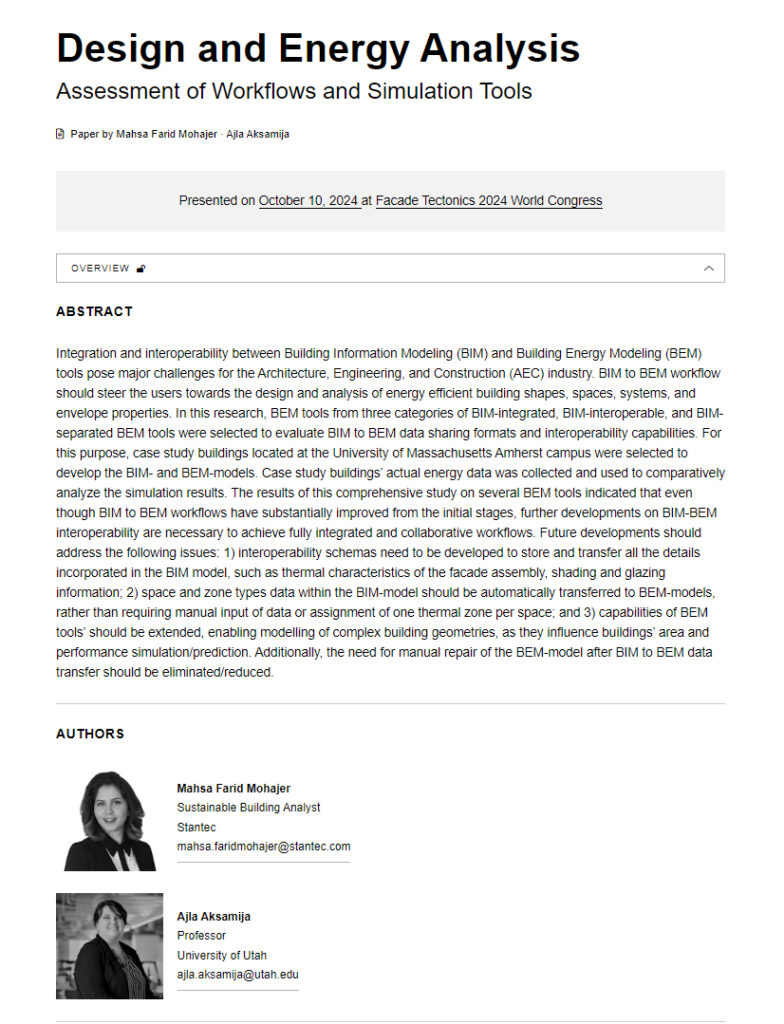
"Design and Energy Analysis: Assessment of Workflows and Simulation Tools" discusses integration and interoperability between Building Information Modeling (BIM) and Building Energy Modeling (BEM) tools, which pose major challenges for the Architecture, Engineering, and Construction (AEC) industry. BIM to BEM workflow should steer the users towards the design and analysis of energy efficient building shapes, spaces, systems, and envelope properties. In this research, BEM tools from three categories of BIM-integrated, BIM-interoperable, and BIM-separated BEM tools were selected to evaluate BIM to BEM data sharing formats and interoperability capabilities. For this purpose, case study buildings located at the University of Massachusetts Amherst campus were selected to develop the BIM- and BEM-models. Case study buildings’ actual energy data was collected and used to comparatively analyze the simulation results. The results of this comprehensive study on several BEM tools indicated that even though BIM to BEM workflows have substantially improved from the initial stages, further developments on BIM-BEM interoperability are necessary to achieve fully integrated and collaborative workflows. Future developments should address the following issues: 1) interoperability schemas need to be developed to store and transfer all the details incorporated in the BIM model, such as thermal characteristics of the facade assembly, shading and glazing information; 2) space and zone types data within the BIM-model should be automatically transferred to BEM-models, rather than requiring manual input of data or assignment of one thermal zone per space; and 3) capabilities of BEM tools’ should be extended, enabling modelling of complex building geometries, as they influence buildings’ area and performance simulation/prediction. Additionally, the need for manual repair of the BEM-model after BIM to BEM data transfer should be eliminated/reduced.
Citation:
Farid Mohajer, M., and Aksamija, A., (2024). “Design and Energy Analysis: Assessment of Workflows and Simulation Tools”, Proceedings of the Facade World Congress 2024, Salt Lake City, UT, October 8-10.
